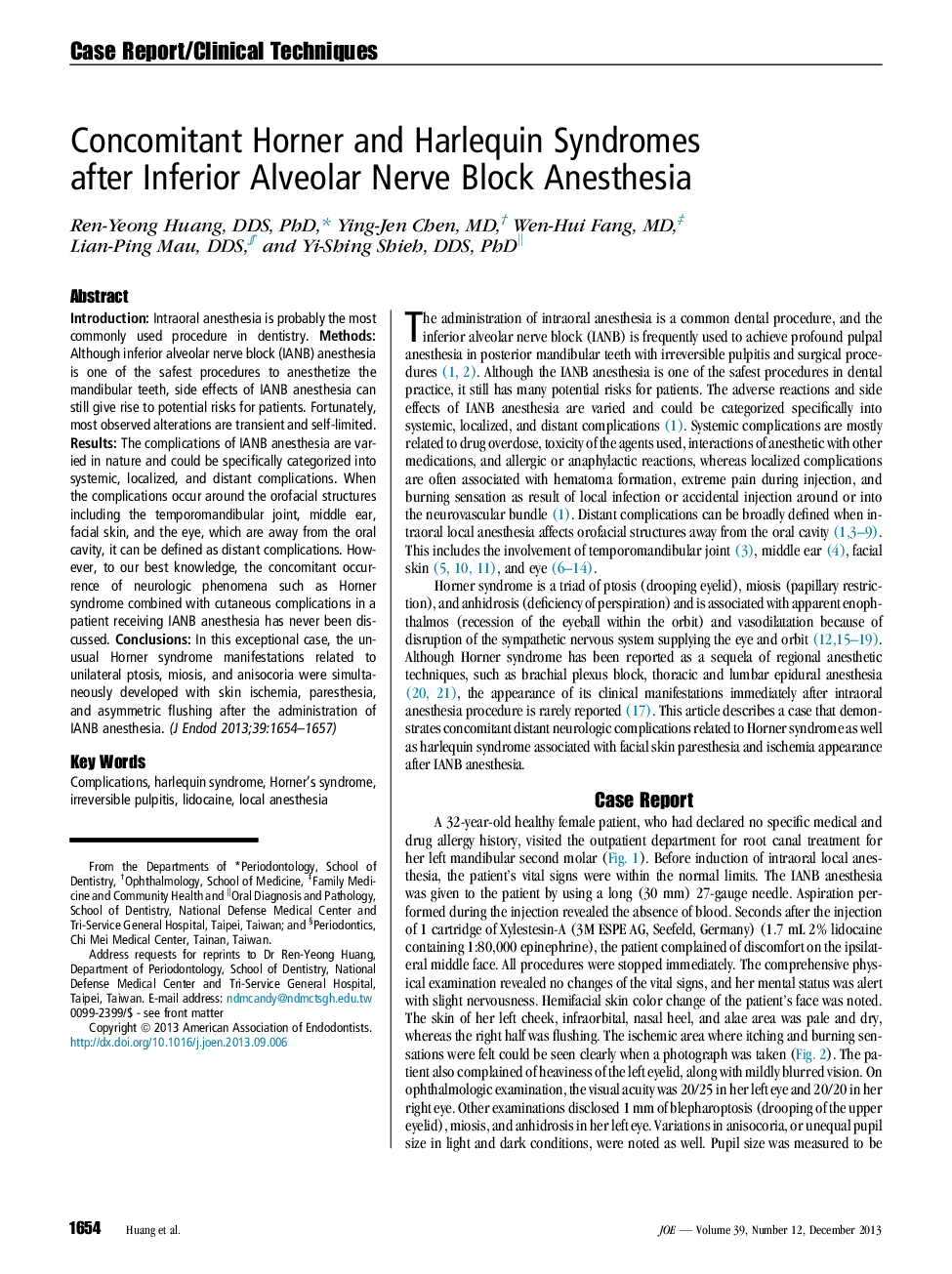| Article ID | Journal | Published Year | Pages | File Type |
|---|---|---|---|---|
| 3148693 | Journal of Endodontics | 2013 | 4 Pages |
IntroductionIntraoral anesthesia is probably the most commonly used procedure in dentistry.MethodsAlthough inferior alveolar nerve block (IANB) anesthesia is one of the safest procedures to anesthetize the mandibular teeth, side effects of IANB anesthesia can still give rise to potential risks for patients. Fortunately, most observed alterations are transient and self-limited.ResultsThe complications of IANB anesthesia are varied in nature and could be specifically categorized into systemic, localized, and distant complications. When the complications occur around the orofacial structures including the temporomandibular joint, middle ear, facial skin, and the eye, which are away from the oral cavity, it can be defined as distant complications. However, to our best knowledge, the concomitant occurrence of neurologic phenomena such as Horner syndrome combined with cutaneous complications in a patient receiving IANB anesthesia has never been discussed.ConclusionsIn this exceptional case, the unusual Horner syndrome manifestations related to unilateral ptosis, miosis, and anisocoria were simultaneously developed with skin ischemia, paresthesia, and asymmetric flushing after the administration of IANB anesthesia.
